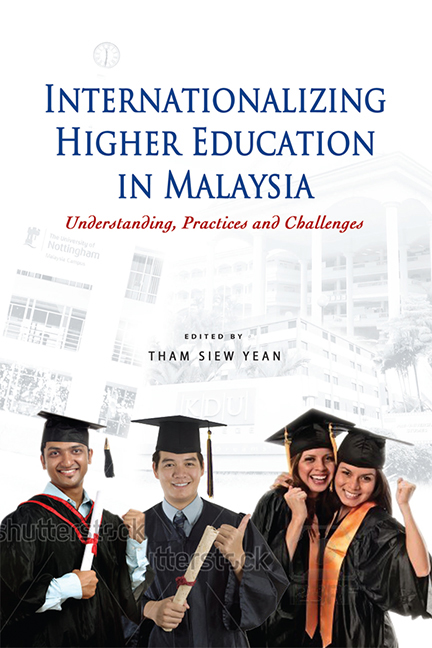Book contents
- Frontmatter
- Contents
- List of Tables
- List of Figures
- Preface
- Contributors
- 1 From the Movement of Itinerant Scholars to a Strategic Process
- 2 Towards Understanding the Internationalization of Higher Education and its Challenges
- 3 Public Universities: Development and Internationalization
- 4 Private Higher Education Institutions: Development and Internationalization
- 5 Macro Perspectives: Ideas, Practices and Challenges
- 6 Micro Perspectives: Ideas, Practices and Challenges
- 7 Concluding Remarks
- Index
4 - Private Higher Education Institutions: Development and Internationalization
Published online by Cambridge University Press: 21 October 2015
- Frontmatter
- Contents
- List of Tables
- List of Figures
- Preface
- Contributors
- 1 From the Movement of Itinerant Scholars to a Strategic Process
- 2 Towards Understanding the Internationalization of Higher Education and its Challenges
- 3 Public Universities: Development and Internationalization
- 4 Private Higher Education Institutions: Development and Internationalization
- 5 Macro Perspectives: Ideas, Practices and Challenges
- 6 Micro Perspectives: Ideas, Practices and Challenges
- 7 Concluding Remarks
- Index
Summary
INTRODUCTION
At the time of Independence, opportunities for higher education in Malaysia were limited as there were no public universities in the country. Private higher education institutions (PrHEIs), however, were already present as tutorial centres for transnational programmes that were geared towards selected skills and professional qualifications. After Independence, PrHEIs continued to grow over time, in response to market forces from within and without the country. In particular, the shift from a government-led to a private sector-led strategy for development in the country in the mid-1980s led to domestic liberalization in manufacturing and services, including the educational sector. Consequently, government permission was given for the setting up of twinning arrangements between local private and public educational establishments with foreign universities (Sivalingam undated, p. 14).
Economic recovery and the subsequent buoyant economic growth in the second half of the 1980s intensified corporate presence in the education sector. Malaysian companies, be it individually, or as a consortium of companies or public listed companies or government corporations viewed private higher education as an alternative source of revenue as well as a means to enhance the property values of corporations that are involved in the development of new townships (Tan 2002, p. 120).
Later, the development of this sector was boosted with the enactment of the Private Higher Educational Institutions Act 1996 which further liberalized the sector. In turn, the dynamic growth of this sector served to reduce international exchange losses by providing an alternative pathway to an overseas education for domestic students. The government also envisioned the emergence of a regional education hub in the country by furthering the development of this sector. It is hoped that this will allow Malaysia to shift from being a net importer to a net exporter of higher education. At the same time, its development will also complement public provision towards meeting Malaysia's human resource needs for development.
- Type
- Chapter
- Information
- Internationalizing Higher Education in MalaysiaUnderstanding, Practices and Challenges, pp. 66 - 86Publisher: ISEAS–Yusof Ishak InstitutePrint publication year: 2012

